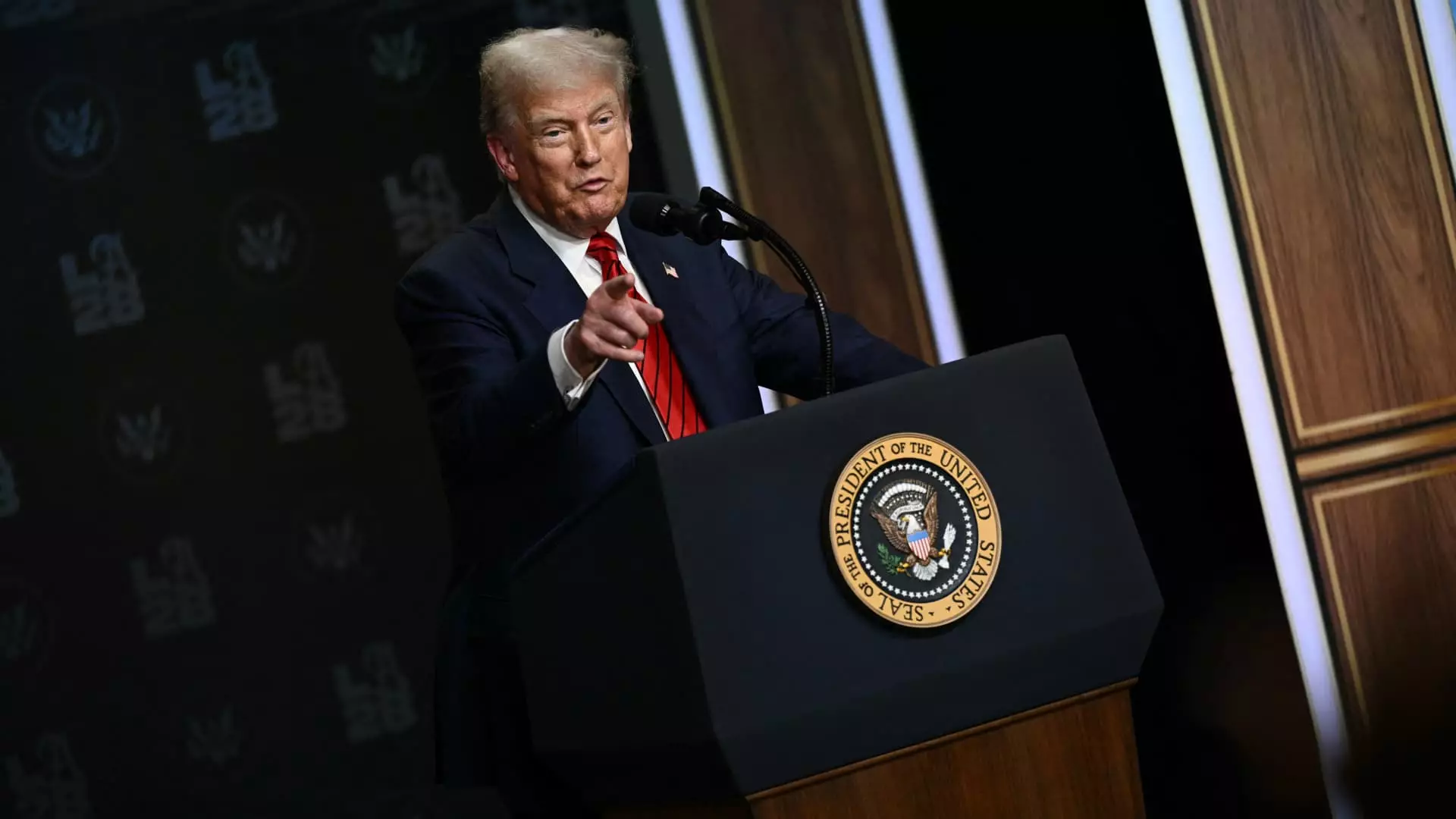At the surface, the recent statements from both Donald Trump and the European Union create an illusion of progress and mutual benefit. The EU’s pledge to invest an astounding $600 billion into the United States appears, on paper, to be a monumental step toward stronger transatlantic ties. However, a deeper critique reveals this promise as nothing more than vaporware — a politically motivated gesture rife with ambiguity and questionable enforceability. It is essential to approach such declarations with skepticism and recognize the gaps between political rhetoric and actual economic commitment.
There is a troubling disparity between the EU’s non-binding promise and the tangible realization of investments. The EU claims interest in funneling large sums into U.S. sectors, but the actual mechanisms for transforming these intentions into concrete capital flows remain vague. Lacking enforceability, this pledge risks becoming a diplomatic illusion rather than a catalyst for meaningful economic growth. This mismatch between what is promised and what can realistically be delivered exposes the premature celebration of a deal that, in reality, might never come to fruition.
Economic Reality vs. Political Posturing
From an economic perspective, the idea that private sector companies will collectively invest $600 billion hinges on unpredictable variables: market conditions, regulatory frameworks, and political stability. The pandemic’s disruption has already strained global supply chains, and political uncertainty in the U.S., especially with a transition of power potentially on the horizon, adds layers of complexity. Investors are unlikely to commit vast sums based solely on optimistic pledges, particularly when they face ambiguity about future policy directions.
Moreover, the assumption that European companies will follow through on the EU’s broad investment promises is overly optimistic. European industries—ranging from automotive to pharmaceuticals—operate within a mosaic of national interests and regulatory environments. While some sectors might see opportunities, the final decision to invest depends heavily on individual corporate calculus, which is influenced by factors far beyond the scope of political pledges.
Addressing the timeline, the EU’s target of 2029 is particularly suspect. It conveniently coincides with the end of Trump’s presidency, raising doubts about whether the commitment remains relevant or meaningful beyond political expediency. If future administrations have differing priorities or if current geopolitical tensions persist, the likelihood of this investment materializing diminishes further. This timing underscores the fragile nature of the agreement, which appears more like a placeholder rather than a binding contract.
Power Dynamics and the Myth of Enforcement
One of the core issues underlying this so-called investment pledge is the EU’s lack of enforceability. Unlike a bilateral treaty with binding clauses, this commitment exists primarily on paper, driven by diplomatic goodwill rather than legal obligation. EU member states and private companies retain autonomy, making it exceedingly difficult for the European Commission—or any external body—to steer or compel actual investment.
This situation is a textbook example of transactional diplomacy that relies heavily on political will rather than institutional authority. While the EU may have expressed interest and provided estimates, there is little chance of cross-border enforcement to ensure that investments occur as promised. Therefore, statements about future capital flows should be viewed skeptically and understood as political gestures designed to appease or influence negotiations, rather than concrete commitments with teeth.
Furthermore, this dynamic grants the U.S. leverage in economic negotiations. Trump’s explicit warning about tariffs if the EU does not follow through exposes an asymmetric power relationship—where the U.S. can threaten to escalate tariffs in response to non-compliance, thereby pressuring the EU into compliance. Such tactics further undermine trust and emphasize the transactional, rather than partnership-based, nature of these agreements.
The Broader Geopolitical Implications
This “investment promise” exemplifies the toxicity of relying on superficial agreements to mask deeper geopolitical tensions. In an era of shifting alliances and unpredictable leadership, diplomatic promises that cannot be enforced risk creating a false sense of security. They serve more as leverage points than as genuine commitments to mutual prosperity.
The real concern lies in the future: if the EU cannot fulfill its commitments, what does that say about its stability and integrity as a partner? Conversely, the U.S. must recognize that relying on fragile diplomatic statements does little to fortify long-term economic and strategic alliances. Instead, it risks becoming entangled in a cycle of promises and threats, where tangible progress is sacrificed for showmanship.
Such an approach ultimately undermines the principles of fair, accountable diplomacy. In a global landscape increasingly characterized by economic nationalism and bilateral confrontations, genuine cooperation requires more than empty promises. It demands enforceable commitments built on mutual trust, shared values, and sustainable policies—elements sorely lacking in the current EU-U.S. narrative.


Leave a Reply